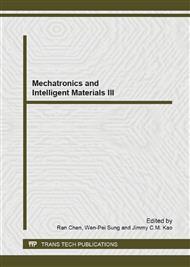p.1159
p.1163
p.1167
p.1171
p.1175
p.1183
p.1189
p.1193
p.1197
The Integrated Simulation on Power Source of Hydraulic Hybrid Vehicle
Abstract:
In order to improve the fuel economy and to reduce emission of the hybrid vehicle, according to between the power flow distribution and energy utilization with two or more than two of energy flow of the hybrid vehicle, was put forward to use adaptive fuzzy control law and LMS (Least Means Squares) to integrated simulate for power source. Pinciple of control algorithm was introduced, and control rules have been setup. Through the case to verify, the simulation results show that the control method is reliable and effective, and the disturbance input of the same torque, fluctuation of the engine rotation is from the 15% by traditional method down to 1.2%~3% and the operation area of the power source is mainly located in the economic area.
Info:
Periodical:
Pages:
1175-1182
Citation:
Online since:
June 2013
Authors:
Price:
Сopyright:
© 2013 Trans Tech Publications Ltd. All Rights Reserved
Share:
Citation:


